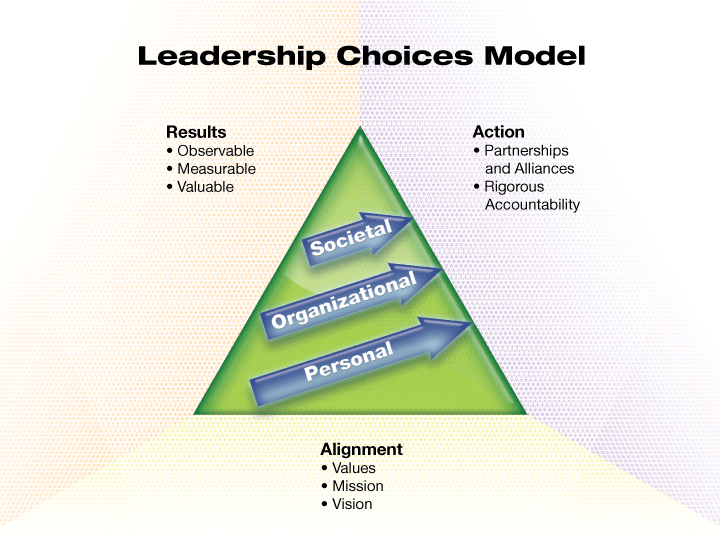
Creating a workplace that puts employees first isn't just a buzzword—it's crucial. Companies with engaged employees do way better, earning 147% more per share than their competitors. This shows why it's so important to focus on the well-being and growth of your team. But what does an employee-centric culture really mean, and why does it matter for long-term success? In this article, we'll break down what this culture is and why it matters. You'll get a step-by-step guide to building a workplace that not only draws in top talent but also keeps employees happy and productive. We'll look at the many benefits of this approach and the challenges you might face. So, whether you're an experienced HR pro or a leader looking to boost your organization's culture, get ready for a deep dive into what makes employee-centric workplaces tick!
Definition and Importance of Employee-Centric Culture
What is Employee-Centric Culture?
An employee-centric culture puts employees first in every company decision, seeing them as more than just workers. It's akin to creating a welcoming home where employees feel respected and supported. When you listen and care about your employees, they feel a sense of belonging and appreciation.
This culture sparks creativity and innovation by involving employees in decisions and tailoring work setups to fit different needs. Trust is key here, allowing employees to manage their work autonomously. This empowers employees to grow into confident leaders, enhancing their experience and engagement.

Why Employee-Centric Culture Matters
An employee-centric culture boosts engagement and satisfaction, which in turn enhances both individual and company performance. Happy employees can be up to 20% more productive, driving innovation and profits.
- This culture attracts and retains top talent by acknowledging both personal and professional needs.
- Empowering employees to make decisions increases morale and accountability, benefiting business outcomes.
- Flexible work setups improve work-life balance, aligning employee well-being with business goals to build a strong, innovative organization.
Employee-centric culture is a business strategy that focuses on workers' needs, leading to success. Companies with high engagement levels often outshine their peers in productivity, profitability, and innovation, as noted by Top Employers. SmartSurvey also points out that happy employees can be up to 20% more productive.
Step-by-Step Guide to Building an Employee-Centric Culture
Evaluate Current Employee-Centric Culture and Needs
Utilize Surveys, Interviews, and Feedback for Insights
To create a workplace that puts employees first, you need to understand their current experiences, needs, and struggles. Begin by distributing surveys that cover:
- Job satisfaction
- Work environment
- Communication effectiveness
- Leadership effectiveness
Ensure these surveys are anonymous to encourage honesty.
But don't stop at surveys. Conduct interviews with employees from various departments and levels to gain deeper insights. These interviews can reveal specific issues and provide a clearer understanding of the organizational dynamics. Additionally, hold feedback sessions where employees can share their thoughts in a group setting, demonstrating your commitment to their input.
Identify Gaps in Support and Leadership
After gathering data, analyze it for patterns and recurring themes. Identify areas where employees may lack:
- Support
- Resources
- Training

Evaluate the effectiveness of communication across the organization. Examine if the tools and technologies meet employees' needs and assess leadership accessibility and engagement. Identifying these gaps is a crucial step toward improving the workplace for everyone.
Engage Leadership for Employee-Centric Commitment
Secure Leadership Buy-In for Employee-First Culture
Transforming a company's culture begins at the top. Leaders must understand the importance of focusing on employees, which boosts productivity, satisfaction, and retention. Present data and examples from successful companies that prioritize employees.
Once leaders recognize the value, they need to commit to actions that reflect this approach. This involves leading by example and demonstrating empathy, transparency, and a genuine interest in employee well-being.
Cultivate Empathy and Active Listening in Leaders
To support an employee-focused culture, leaders must cultivate specific traits:
- Empathy: Helps leaders understand and relate to employees' feelings, fostering a supportive environment.
- Transparency: Builds trust and openness. Leaders should communicate openly about goals, challenges, and changes.
- Active Listening: Essential for understanding employees' concerns without interrupting or judging.

Regular training can help leaders develop these skills.
Benefits of an Employee-Centric Culture
Boosting Employee Engagement and Productivity
When a company focuses on its employees, it significantly boosts their engagement levels. Employees need to feel like they belong and matter. In such an environment, they are more open to sharing ideas and solving problems collaboratively. This leads to increased creativity and improved teamwork.
Giving employees the freedom to perform their jobs in their own way enhances their work quality and productivity. Engaged employees are more likely to stay longer, maintaining steady productivity levels. Moreover, when employees feel empowered, they handle customer interactions with professionalism and dedication, contributing to the company's growth.

Learn more about employee engagement and productivity.
Strategies for Talent Attraction and Retention
Companies that prioritize their employees attract top talent by fostering a positive work environment. They emphasize creativity, work-life balance, and inclusivity, which helps prevent burnout and build loyalty, resulting in longer employee tenure.
By aligning employees with the company’s values, satisfaction increases and turnover decreases. Recognition programs and supportive policies demonstrate the company’s commitment to its people, making it a desirable place for both new and existing employees.
Explore strategies for talent attraction and retention.
Enhancing Brand Reputation and Customer Satisfaction
Employees who feel valued and engaged naturally become advocates for the company. They share their positive experiences on platforms like LinkedIn and Glassdoor, enhancing the company’s reputation.
A strong employee focus leads to superior customer service, as employees exhibit greater professionalism and commitment. This results in higher customer satisfaction and loyalty. When employees and the company share the same values, the brand identity strengthens, improving public perception and providing a competitive edge.
Ultimately, these employee-focused practices enhance the company’s reputation and financial performance by retaining customers and maintaining market competitiveness.

Discover the impact on brand reputation.
Overcoming Challenges in Building an Employee-Centric Culture
Tackling Resistance to Change in an Employee-Centric Culture
Resistance often arises when employees feel overlooked or uncertain about new initiatives. To effectively identify and address these challenges, it's crucial to maintain open communication and actively listen to your team. Evaluate current engagement levels to uncover underlying issues, such as a lack of recognition or excessive stress.
To foster trust and facilitate change, consider the following strategies:
- Develop clear plans that incorporate employee feedback.
- Recognize employee efforts and contributions.
- Communicate the rationale behind changes.
By demonstrating genuine concern and openness, leaders can alleviate doubts and support a smoother transition for everyone involved.

Aligning Employee Needs with Business Goals in a Thriving Culture
An employee-focused culture aligns organizational objectives with the well-being of its workforce. When employees feel valued, they tend to perform better and demonstrate greater loyalty. Achieving this balance involves:
- Providing autonomy and flexibility tailored to individual needs.
- Maintaining transparent goals that align with employee values.
Regularly assessing engagement and adjusting policies ensures harmony between employee needs and business objectives.
Securing Leadership Support for an Employee-Centric Culture
Leadership commitment is vital in cultivating an employee-focused culture. Leaders should actively participate by:
- Encouraging open dialogue and recognizing achievements.
- Fostering growth through support and development opportunities.
Creating an environment where employees feel comfortable sharing ideas enhances their willingness to contribute. Joint workshops and collaborative projects involving both leaders and employees in defining shared values encourage collective buy-in. When leaders prioritize employee well-being, it underscores that success encompasses both results and people.
For further insights, explore these resources on employee-centric culture, overcoming resistance to change, and balancing employee needs with business goals.
Frequently Asked Questions About Employee-Centric Culture
Measuring Effectiveness of Employee-Centric Culture
To determine if your employee-centric culture is effective, consider the following indicators:
-
Employee Engagement: Engaged employees are generally more productive, creative, and loyal. Monitoring engagement levels can provide insights into your culture's success (Niva Bupa).
-
Morale and Retention Rates: High morale and low turnover are positive signs of a thriving employee-centric culture (Top Employers).
-
Productivity and Performance Metrics: Evaluate these metrics to see if there is a noticeable improvement due to employee-focused practices (Top Employers).
-
Feedback and Satisfaction: Use surveys and open communication channels to gather feedback on employee satisfaction (Business.com).
-
Customer Interactions: Observe how employees interact with customers. Happy employees often lead to happy customers (Artify360).
Steps to Implement Employee-Centric Culture in Your Organization
To foster an employee-centric culture, consider the following steps:
-
Assess Current Culture: Evaluate your existing company culture to identify weaknesses that may hinder employee engagement (Business.com).
-
Encourage Open Communication: Create a safe environment for open communication and feedback (Top Employers).
-
Celebrate Achievements: Recognize and celebrate employee achievements to boost morale (Niva Bupa).

-
Career Growth Opportunities: Provide opportunities for career development and growth (Niva Bupa).
-
Supportive Policies: Ensure company policies promote employee well-being, such as work-life balance and support programs (Artify360).
-
Recognition Programs: Implement recognition programs and ensure managers actively listen to employees (Business.com).
Impact of Employee-Centric Culture on Customer Satisfaction
An employee-centric culture positively influences customer satisfaction in several ways:
-
Improved Interactions: Engaged and supported employees tend to provide better customer interactions, enhancing professionalism and overall experience (Artify360).
-
Consistent Customer Experiences: A positive employee culture leads to consistently excellent customer experiences (Top Employers).
-
Pride and Service Quality: Employees who feel valued and invested in the company's success are more likely to take pride in their work, resulting in better customer service (Business.com).
- Innovation and Adaptability: High employee morale and motivation can drive innovation and adaptability, enhancing customer solutions and responsiveness (Top Employers).